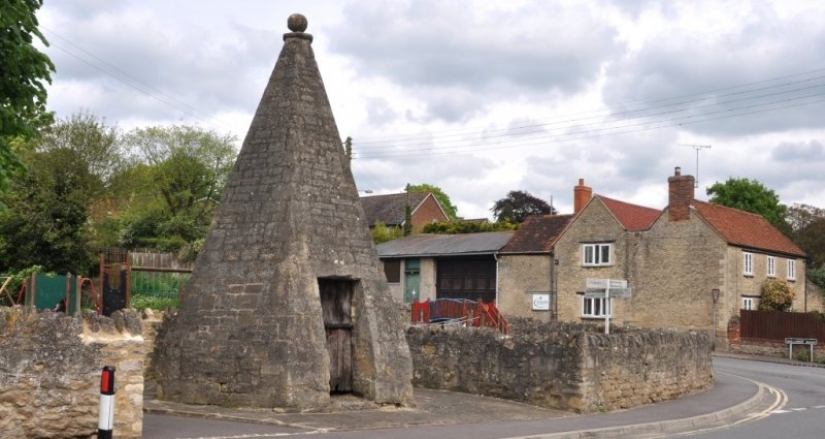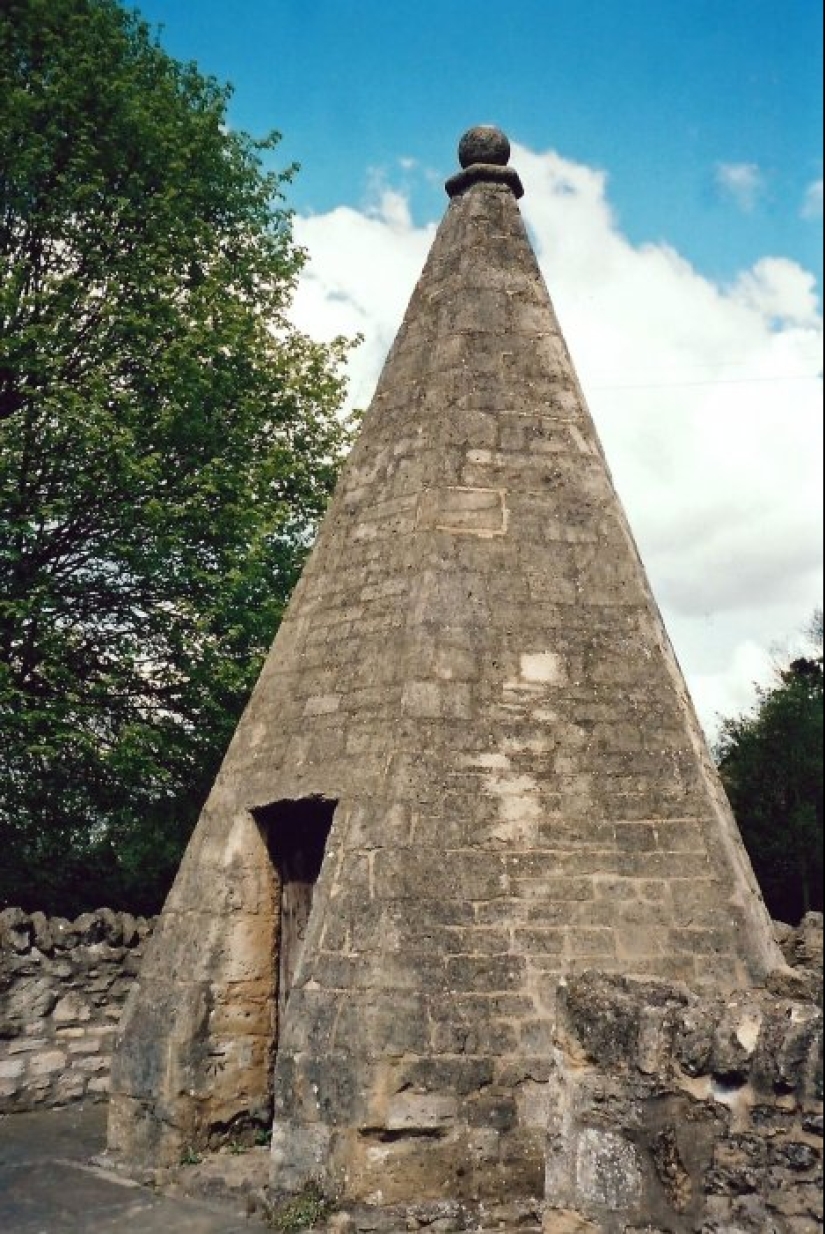Drank - to jail! How the smallest sobering-up station worked in England

For many, a sobering-up station is something brutal and shameful from the Soviet era. But such establishments for bringing drunks and troublemakers back to normal did exist. One of the oldest sobering-up stations in the world is Whitley Castle in the village of the same name in Oxfordshire, England. Yes, that is the official name for this miniature pyramidal structure made of gray stone, which could only fit one person inside.
Official documents kept in the Oxford archives say that Whitley Castle was built in 1834 as a temporary prison for drunks and troublemakers. It was created by a local mason named Cooper, whose name, unfortunately, history has not preserved. The architect of the project also remains unknown, although some researchers suggest that Cooper himself could have been the author of this unusual project.

The castle is a hexagonal pyramid of grey limestone, topped with a spherical cap. There are no windows in the building and only one doorway facing the street of the small ancient village of Whitley. The peace of the locals was protected from the guest by a massive oak door.
History has it that the village of Whitley has always been populated by decent and hard-working people. But at weekends they often drank more than their share and then behaved in a less than ideal manner. The fact that at the beginning of the 19th century the small village had as many as ten pubs contributed to the drinking! It is not surprising that the local authorities decided to build Whitley Castle. This measure was unpopular, but necessary.
When one of the locals got drunk and started to act up, the only guardian of order in the village would take him to the castle to sleep it off. The drunkard was locked for the night in a small, pitch-dark room where you could barely stretch out your legs. The height of the cell was 2.5 meters, and the floor area was only 1.8 square meters. There were no amenities inside, only a bunch of rotten straw, a jug of water, and a bucket of you know what for. For the most rowdy guests, there were heavy wooden stocks next to the door.
Whitley Castle, still one of the village's main attractions, served its purpose for only six years. Later, the authorities decided that locking drunks in a castle was too harsh a punishment, and the pyramid was no longer used. The Oxford University archives contain a press release from July 2, 1853, which explains this in more detail:
This conclusion was made by the person responsible for maintaining order in the county - the superintendent-constable. He also decided to expand the castle and make it more comfortable and only then use it as a prison. It is absolutely clear that no one has come up with anything to improve the conditions of detention - it is simply impossible.
Historical documents say that similar sobering-up centres used to be in many villages in Oxfordshire. Some of them were more comfortable. But only Whitley Castle, which is adored by tourists, has survived to this day. Most of the time the prison is locked, but in May it is opened to visitors for a few days.
For a nominal fee, anyone can spend five minutes inside the pyramid. Those who try on the role of a drunkard from the early 19th century receive a certificate with a stamp stating that they have "served their time." By the way, local shops sell souvenirs related to this unusual place: mugs, postcards, and even miniature copies of Whitley Castle.
Whitley Castle is now a tourist attraction, but it was once a fearsome place. Are there any unusual historical prisons or sobering-up centers in your city? Share your stories!
